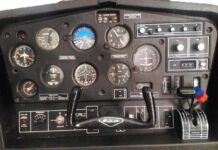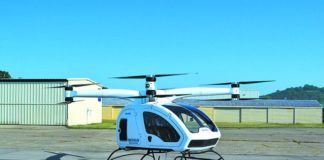Instrument Current
September’s “Readback” column includes a statement that gives me faint hope that I may have been working too hard to track instrument currency. Please squash that before it blossoms into excitement.
At work I fly Citations, along with a Beech Premier and the occasional Mustang. (The Cessna kind, not the fast one with the cool-sounding engine.) Then, when I’ve flown enough to save up a little gas money, a friend lets me use his Cirrus for fun.
When switching from one type to the next I’ve always understood that I need landing currency, night currency and instrument currency in each type. Then I read your answer to Jim in Idaho, and my heart fluttered. I hope that’s not reportable.
You told my fellow reader that a pilot who is instrument current in a type-rated aircraft (the “Seven-Three” driver in your example) would also be instrument current in his Bonanza. That’s cool, and seems even sensible, but does the reverse also hold true? Or more realistically, if a pilot is instrument current in, say, a Premier, would he or she also be instrument current in a Citation?
Here comes a little mild excitement already. Please kill it before I lose all faith in the bureaucracy. Thanks again for a great magazine.
Don C. Stansberry, III
Huntsville, TN
Well, Don, let your heart soar free. While general currency is required in category, class and type (when appropriate), instrument currency is not.
The “normal” way most of us maintain instrument currency is defined in 61.57 (c) (1)—the ol’ 6 in 6 rule. It doesn’t mention category, class or type, but the header does explicitly list categories, in your case, airplane. So, say at work you fly a Twin Otter on floats. That’s an airplane category and multi-engine sea class. While having class matters to a lot of us, it doesn’t to the FAA, at least not in this case. Instrument current in the Tw’otter on floats? Current in your Cirrus. And in your dowdy Mustang.
Moving on to 61.57 (c) (2) for maintaining currency in a sim, it does explicitly list category, but again, not class or type. Instrument current in an airplane is instrument current in all airplanes. Common sense, this time, seems to have won out over bureaucratic overregulation.
Don’t despair, though, the regs provide plenty of other opportunities to restore your faith in senseless bureaucracy. As for your heart flutter being reportable, that’s between you and your AME. Well, and all our readers here, but we won’t tell.
Can’t Find a Stipple Line
October’s Killer Quiz, “Panel by iPad” had some good information. Looking at various charts in the flat land here in the Midwest, I do not see or recognize the shaded line indicating a clear 34:1 slope below the MAP, per question 10. Any chance you could enlighten me?
Tom Srachta
Morris, IL
Look at any FAA approach booklet legend. The page showing the profile view of an RNAV approach has that stipple line, which is kind of a light gray, elongated arrowhead from the VDP to the threshold.
TEC Routes
TEC routes came into existence during the controller strike in August, 1981. ATC had a very small number of controllers to assign to Center positions. Early in the strike, the managers ran Center and quickly became overloaded. Something had to be done.
Local towers were less affected. TEC was a way for GA and other low-flying aircraft to move via IFR without having to contact Center, thus offloading Center controllers while adding somewhat to the workload in the towers.
Of course, these only worked (and still only work) because of the high traffic density and numbers of airports with towers in southern California and the northeast.
Stan Quayle
Pickerington, OH
Enjoyed your article on TEC routes in the August issue of IFR. I’m based in Texas so only had one opportunity to fly them on a visit to San Diego last year. Unless it has changed, as you mentioned, Garmin databases do not have the canned routes necessitating entry of each waypoint individually into the GPS. Plus, the waypoints are spaced much closer compared with Victor airways and even in a pokey Piper Arrow they sequence pretty quickly, adding to the workload.
Douglas Boyd
Sugar Land, TX
It Looks Simple, But…
I’ve got some questions about the ILS 23 approach at Frederick, MD (KFDK).
Say you flew the approach and missed. You’re in the hold at RICKE and you’re going to try again. Once cleared for the approach, but still in the hold, what do you do and at what altitude should you do it? Can you descend to the FAF altitude of 1700 feet? Do you have to leave the hold and fly a normal procedure turn?
As you can see, the confusion comes from RICKE serving three masters: an IAF, the FAF and the missed-approach holding fix. It looks simple, but hides some subtleties. Can you help sort it out?
Dan Lawson
Silver Spring, MD
We instrument pilots often tend to inject complexity where we really don’t need it. This could well be one of those cases.
Let’s look at this one segment at a time. Your question starts in the missed-approach hold at 2800 feet. You’re cleared for the approach and you’ve got to stay at or above 2800 feet until you’re inbound on final and can descend to 1700 feet outside RICKE (as the FAF), but you’ve got to get off the hold, first.
Note that as soon as you got cleared for the approach, you’re currently carving circles over an IAF—a point from which the approach may begin. There’s nothing that prohibits you from sliding over from the hold outbound to outbound on the final approach course, then just doing your normal procedure turn.
But that seems a bit awkward, and that slide over to the final will be without navigational guidance.
That barb on the chart simply means that’s the side of the final on which you’ve got to get turned to fly inbound. It doesn’t require that you fly a standard procedure turn. So, since you’re already in what amounts to a hold-in-lieu-of-a-procedure turn, why not use that?
Regardless of the path you choose, the chart tells you to stay at or above 2800 feet until you’re inbound on final. From the hold, you’d merely start down (rather hurriedly, to lose 1100 feet in about a minute) as you’re inbound toward RICKE, the FAF. You could get configured early, in the hold, to make the descent easier. Note though, that you’ll have to arrest that aggressive descent rate or you’ll blast right through the glideslope so fast you might not even notice.
To avoid the steep descent, extend the outbound leg. While the missed-approach hold has one-minute legs, once cleared for the approach, your only restriction is to remain within the requisite 10 miles.




